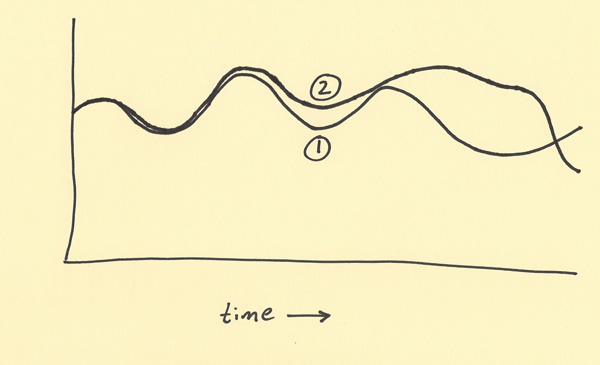
METEOROLOGIST JEFF HABY
The Butterfly Effect originated from work done by Meteorologist Edward Lorenz. A slight change in the initial conditions can produce dramatic
changes through time. It helps explain why longer term weather forecasts are typically not accurate. Just changing the initial weather
conditions by tiny small amounts can result in dramatically different weather in the long term. The graph below shows an example of how
the process works. Initially both graphs on the left side of the diagram start at almost the exact same value. These values can be
thought of as temperature, pressure or another varying meteorological variable. Through time they start off by following each other
closely. However, as time goes by they begin to diverge and then are very different. Slight changes in the initial conditions can
lead to very different long term forecasts. This change in initial conditions can be the result of rounding errors, measurement
errors, use of different types of measuring devices, the measurements that are used, uncertainty, spacing between measurements,
types of equations used, how equations are solved, scale limitations, variables used in equations, etc. Very small events such as flapping butterfly
wings can result in significant weather phenomena when given enough time. The Butterfly effect explains the limitations
to having correct long term weather forecasts.

|
|
|

